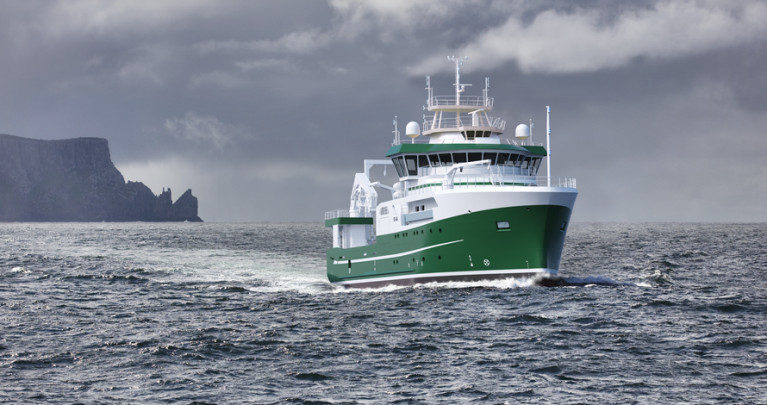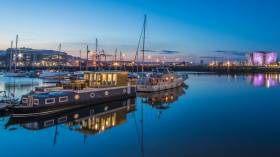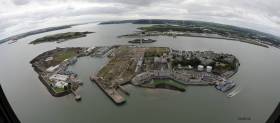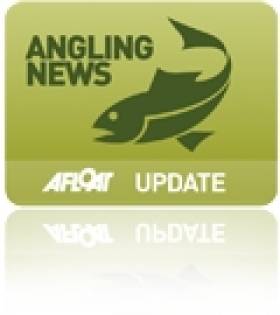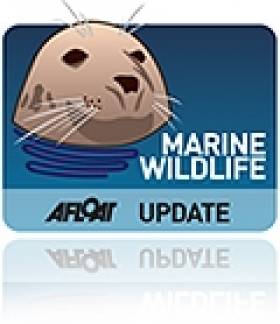Displaying items by tag: accommodation
Functions of the RV Tom Crean from the Science Labs to A 'Drop' Keel
The level of interest on the Marine Institute's €25m newbuild RV Tom Crean is most encouraging and so Afloat continues with further details of the ship currently under construction in Spain, writes Jehan Ashmore
Before more information is outlined, just to mention the previous coverage focused on the aft deck full of high-tech equipment. This is where operations will take place using an array of state of the art machinery to perform multi-disiplinary tasks in pursuit of marine science research.
On this occasion, Afloat looks into some of the interior spaces, with further scientific functions as outlined by the Marine Institute which is to name the ship in honour of the Irish explorer. In addition facilities for crew and scientists of up to 26 in total.
Laboratory facilities
The vessel has 6 main laboratories.
CTD/Water lab: this is a 18m2 laboratory for processing Oceanographic and sediment samples. The lab is equipped with refrigerators, and -20 and -80 freezers
Constant temperature Lab: This 8m2 Laboratory is designed to maintain a constant temperature of 20 degrees C which is required for specialised scientific measuring equipment
Fish/wetlab: This 37m2 laboratory is equipped with a fish conveyor and sorting belt , fish measuring and weighing stations . This lab is used for processing and acquiring data on catches during trawl surveys . Up to 11 fisheries scientists can work in this area whilst on fishing surveys
Operations centre/Acoustic lab: This a 35m2 room on the 1st Deck where all ships acoustic sensors such as Multibeam echosounders, Fisheries echosounders, Sonars and Sub bottom profiling equipment are operated from and all data acquired and processed. The ships servers for storage of data from all systems are located here
Video Playback room
This a 12m2 room for processing footage from various subsea video systems including footage from Prawn surveys which require playback and counting of prawn burrows which is utilised to assess the stock levels of this very valuable stock.
Seawater Lab: This is a small lab on the lower deck where the ships “underway” water sampling equipment is located. This equipment measures the temperature, salinity and levels of other key parameters in seawater on a constant basis.
Drop keel
A 14 tonne “Drop keel” will be in the centre of the ship which retracts up into the hull and when deployed allows the sensors (Fisheries echosounder and multibeam echosounder) mounted on it to be positioned 2.5 metres below the ships keel to ensure they produce high quality data.
Dynamic positioning
The ship has a DP1 (Dynamic positioning class 1) which allows the vessel to hold position with high accuracy through automatic combined use of its bow and stern thrusters, rudder and propeller.
Accommodation
The vessel has a mix of single and double cabins to allow a maximum compliment of 26 on board. A messroom will provide seating for 26. There is a separate galley along with chilled and frozen provision rooms. In addition a separate lounge area for 12.
Two chic barge berths at Belfast Harbour Marina are available for bookings for those looking for a different base to explore Northern Ireland.
The berths — named ‘Harland’ and ‘Wolff’ after the city’s iconic shipyard — comprise the renovated barge Nolly, which in a previous life had once cruised the canals of Lanarkshire in Scotland.
When it came into the hands of Gillian Campbell and Aidan Metcalfe, they assembled a dedicated team to transform a vessel that had been set for scrap into a luxury holiday letting.
That involved painstaking work of stripping back the barge all the way to its steel frame and essentially rebuilding it as an entirely new boat, designed along the lines of houseboats common on the continent.
Today, Nolly’s two self-contained apartments are available to book on AirBnB for short stays right in the heart of Belfast.
And now, the team behind Nolly want to put their hard-earned knowledge to work with commissions for new luxury barges build to a similar spec.
Organisation 'Very Sceptical' of Dept's Plans to Overhaul Haulbowline Accommodation for Sailors
An organisation which represents enlisted personnel in the Defence Forces says it's "very sceptical" about the Department of Defence's claim that it will address the accommodation crisis at Naval Service headquarters "as a matter of urgency".
PDFORRA's president Mark Keane, writes The Irish Examiner, said plans to convert a Victorian-era block at Haulbowline Island were drawn up in 2014 and since then nothing had happened, even though more and more sailors are now sleeping on ships.
As far back as March 1992, the then Defence Forces Quartermaster General (equivalent today to a Deputy Chief of Staff) recommended that accommodation at military barracks should be adequate and "aspire to the standard within the civilian community generally".
Latest figures obtained from Defence Forces sources show more than 70 sailors are sleeping on ships at the naval base.
Many are young and so poorly paid they can't afford soaring rents and have no choice but to live on board the vessels they crew.
For further reading click this link.
Dream Home at Water's Edge on Great Island
#WATERFRONT PROPERTY - A beautifully restored period house on 14 acres of Great Island in Co Cork could be a dream home for any big spender.
Accepting offers over €3 million, the house at East Grove believed to date from the early 19th century and is constructed of stone under a slate roof, with attractive shallow gables.
Approached via a long wooded avenue, the house commands a magnificent position overlooking a peaceful inlet of Cork Harbour.
Accommodation comprises five reception rooms, including a drawing room, dining room and library; six bedrooms including a master bedroom with ensuite; and a fully fitted kitchen with black granite countertops and pantry.
Outside there is a courtyard with stables, a work shop and storerooms, as well as a one-bedroom apartment arranged on two floors, while further accommodation is available in the two-bedroom gate lodge with its own gardens.
Other amenities include a delightful walled garden, an indoor swimming pool, tennis courts and a boathouse with private harbour and boat slipway with a floating yacht pontoon and moorings.
Viewing of East Grove is strictly by appointment only with joint agents Knight Frank and Dominic Daly. More on the property is available HERE.
Wexford Hosts 24th Winter Shore Angling Festival
#ANGLING - The beaches of east Wexford will again play host to the 24th Winter Shore Angling Festival from 26-28 January.
The cream of sea match angling talent from the United Kingdom and Ireland will be taking advantage of the "exceptional" catches of codling and coalfish in the area as of late, as previously reported on Afloat.ie.
First prize for individuals in 2012 will be €500, apart from two- and four-man competitions and optional pools.
Headquarters for the three-day event will be Seán Óg’s Complex in Kilmuckridge, where accommodation can be reserved through the competition organisers with a special rate of €110 for four nights (breakfast included).
The entry fee of €150 includes a special presentation dinner where trophies will be presented for first, second and third place overall.
For entry details contact Warren Doyle, 98 Seacrest, Bray, Co Wicklow at 086 8069961 (evenings only) or [email protected].
Dun Laoghaire Apartment Provides Stunning Vistas of Dublin Bay
New to the market in Dun Laoghaire is a two-bed apartment in a luxury development of 100 homes overlooking the waterfront marina.
As The Sunday Business Post reports, Number 99 at Harbour View boasts spectaulcar views of Dublin Bay from Clontarf to Howth from its eight-metre balcony.
The fourth-floor apartment extends to circa 102 sqm and has had no previous tenants.
Accommodation comprises an entrance hall in pale hardwood, a large light-filled living/dining area with a corner aspect, a fully fitted kitchen area with breakfast counter, a bathroom, storage room, two bedrooms (one ensuite) and a study that could be used as a third bedroom.
An underground parking space is also included in the sale.
Harbour View is located on Crofton Road beside the DART station, with the yacht clubs and the town centre itself right at your doorstep.
99 Harbour View has an asking price of €575,000. For more details contact estate agents Sherry FitzGerald at 01 284 4422.
IWDG 21st Anniversary Banquet in November
The Irish Whale and Dolphin Group (IWDG) will celebrate its 21st anniversary at a special banquet on Saturday 19 November at the Grand Hotel in Malahide, Co Dublin.
The evening will consist of a three-course meal and entertainment including music and dancing, a film show of IWDG activities over the years, an international guest speaker (to be announced) exploring the impact of the IWDG on cetacean recording.
The marine wildlife conservation group's AGM will take place earlier in the day at the Grand Hotel at 2pm.
Tickets for the banquet are €60 - book early as places are limited to 120. To book contact Shay Fennelly at [email protected] or 087 642 8902.
Overnight accommodation is also available at the Grand Hotel with special rates for banquet guests of €90 for a single room and €110 for a double/twin room. To book contact Hilary Fogarty, quoting IWDG as the reference, at 01 845 0000, 01 816 8281 or [email protected].


























